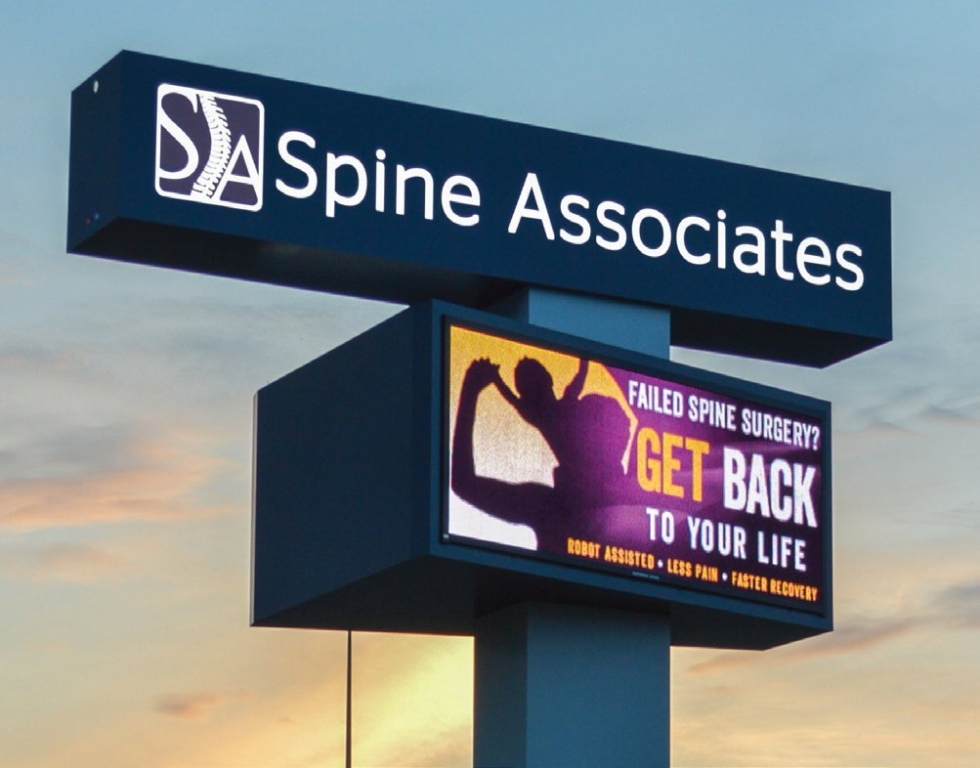ST’s May issue featured the perspectives of Tube Art Group (Seattle) and Ortwein Signs (Chattanooga, TN) that discussed signage trends in their local markets. Here are insights from Gregg Hollenberg, president and CEO of National Signs (Houston, TX), about developments for the sign industry in “Space City”.
How long has National Signs been in business? How has its scope of work evolved over time? How many sq. ft. are your facilities, and how large of a staff? If you operate more than one facility, what is the purpose of each?
National Signs was founded in 1992 and has grown to be the largest sign company in Houston. National Signs has a 60,000-sq.-ft. facility that’s located in Houston’s Inner Loop, minutes from downtown, the Galleria and the Medical Center. That proximity has allowed us to grow and serve some of the largest institutions and companies in Houston. Today we have almost 100 employees in all phases of development, manufacturing and installation. Approximately 60% of our projects are located within a 50-mile radius of downtown Houston, with 85% of our work located in Texas and Louisiana.
What are some particular regulations that make working in Houston unique, or challenging, in comparison to other markets?
Houston is a large, growing city with a strong business community. Certain signage restrictions have impacted the ability of these businesses to maximize the effectiveness of their signage. For example, a gas station can only have one LED-illuminated, gas-price-changing sign on its property, no matter how big the property or how many entrances. In addition, a road’s classification impacts the type of signage that a business or institution may have.
Have you noticed any trends in types of signs customers are ordering? More electronic displays, more monument signs, more comprehensive wayfinding/ADA? Anything else of note?
Certainly we are noticing an increased proliferation of LED illuminated signage. National Signs uses LEDs to illuminate its monuments and pylons almost exclusively. We are seeing an increase in the use of neon for decorative and aesthetic purposes for a classic, retro look. The other trend that has been made possible by LEDs is thinner-profile signage with different kinds of lighting features. Included in this is the increased use of RGB lighting.
Have you noticed anything different in each local economy that has influenced the work you do? If so, what?
In Houston, it’s hard to ignore the price of oil. While our economy has diversified greatly since the last oil-market downturn, the oil industry still represents a significant portion of jobs and spending. We have definitely seen a slowdown from these clients. However, in its place we have seen an uptick in spending by institutional organizations, including healthcare (National Signs is only a couple of miles from the enormous Texas Medical Center), schools (both K-12 and post-secondary) and governmental entities (including local municipalities, the Port of Houston and the Houston Airport System). Overall, despite low oil prices, the Greater Houston Partnership expects positive job growth in Houston for 2016.


 Tip Sheet1 week ago
Tip Sheet1 week ago
 Photo Gallery3 days ago
Photo Gallery3 days ago
 Ask Signs of the Times5 days ago
Ask Signs of the Times5 days ago
 Real Deal2 weeks ago
Real Deal2 weeks ago
 Benchmarks1 week ago
Benchmarks1 week ago
 Paula Fargo14 hours ago
Paula Fargo14 hours ago
 Photo Gallery14 hours ago
Photo Gallery14 hours ago
 Women in Signs2 weeks ago
Women in Signs2 weeks ago












